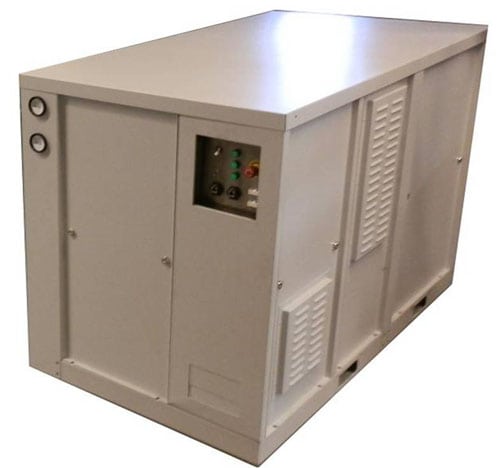Fuel Cell Unit Could Replace Tactical Diesel Generators for U.S. Military
One lesson learned from the U.S. military’s far-flung operations during the 2010s was the critical importance of fuel supply lines. At the peak of the conflict in Afghanistan, getting each gallon of gasoline or diesel into remote operating bases could cost upwards of $1,000 when all transportation and security costs were factored in. With U.S. forces in Afghanistan consuming the equivalent of around 300,000 barrels of oil a day, this meant an enormous amount of resources—and lives—had to be devoted to keeping things running. Through the course of the conflict, several hundred U.S. troops died in attacks on fuel convoys.
The Pentagon has been looking for ways to dramatically reduce its dependence on fossil fuels and fuel shipments, among them smart grid technologies and renewable generation. Another possible solution was announced in mid-August by the Office of Naval Research (ONR).
The ONR reported that tests this June at the U.S. Army’s Aberdeen Proving Ground in Maryland demonstrated that a portable generator powered by a solid-oxide fuel cell (SOFC) could replace the existing 10-kW diesel-powered tactical quiet generator currently in use by the Army and Marine Corps. The SOFC-based generator is about the same size and weight as the unit it could replace but has around half the fuel requirements (Figure 1).

The project was funded by the Office of the Secretary of Defense. The development of the fuel cell generator, which was built by Acumentrics of Westwood, Mass., was the result of collaboration within the Department of Defense’s Energy and Power Community of Interest, which brings together the four military services on a variety of energy and power programs.
“Many useful power and energy technologies have been developed in the last decade,” said Jack Taylor, associate director of ground and sea platforms in the Office of the Assistant Secretary of Defense for Research and Engineering. “We are now at the tipping point to start packaging and deploying these.”
The SOFC-based generator relies on hydrogen to produce electricity, but is able to produce its own fuel from a small reformer inside the unit that generates hydrogen-rich gas from standard military fuels such as JP-8 or diesel. Tests showed the SOFC unit consumed up to 44% less fuel than the current tactical quiet generator.
The unit was designed to operate using the same equipment interfaces, including fuel supplies. While it could run on compressed hydrogen, factors such as safety and logistics would likely make this impractical for widespread use.
In addition to the reduced fuel demands, the SOFC unit has some another advantages. It is nearly silent when operating, making it substantially quieter than the diesel tactical quiet generator. The only noise produced comes from the unit’s cooling fan, which produces a hum similar to that of a refrigerator. The SOFC unit also has a reduced heat signature.
According to Eric Beidel, a strategic communications specialist at the ONR, the SOFC generator project is currently at a “technology readiness level” of 5. This is essentially a proof-of-concept stage, showing potential for limited deployment after militarization. Large-scale deployment would require further development, including greater manufacturing capability to support the deployed numbers and reduced overall cost, as well as further development in materials to improve ruggedness and reliability.
Still, ONR officials were excited about the possibilities.
“Fuel cells are real and are ready for transition to our warfighters,” said Don Hoffman, a program officer in ONR’s Sea Warfare and Weapons Department. “We’re pushing forward to examine adapting this technology for use aboard ships as well.”
—Thomas W. Overton, JD is POWER’s gas technology editor (@POWERmagazine, @thomas_overton).